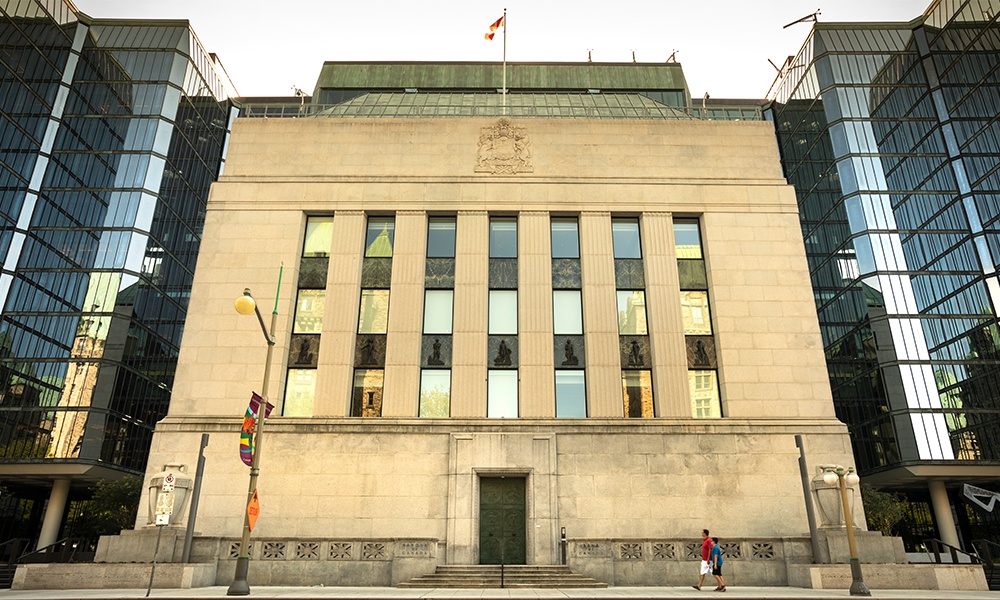Independent group makes recommendations ahead of bank's interest rate meeting next week

The C.D. Howe Institute’s Monetary Policy Council (MPC) has recommended that the Bank of Canada keep its target for its benchmark policy interest rate at 0.25 per cent - until at least July of 2021.
The MPC provides an independent assessment of the monetary stance consistent with the Bank of Canada’s 2 per cent inflation target. The BoC’s next interest rate meeting is scheduled for next Wednesday.
The eight members of the MPC attending this meeting were unanimous in calling for the Bank to keep the overnight rate low for at least the next year. Six of the members called for maintaining the target at 0.25 per cent. Two called for lowering it to 0.1 per cent and maintaining it there.
“The group noted a number of positives since the Bank of Canada’s last overnight rate announcement,” the group's report said. “Indicators of spending and output in many advanced economies, notably the United States, suggest a rebound after the COVID-19-induced shutdowns of the spring.
“Income and credit support policies appear to have cushioned the downturn and boosted the recovery. Less positively, the coronavirus continues to spread in emerging markets, and resurgences, notably in the United States, threaten setbacks in the second half of the year.”
On balance, however, the Institute said news about Canada’s economy has been good, with stronger-than-expected jobs and housing-starts numbers getting particular attention. Government income supports and stronger oil prices have also been near-term positives. The group generally expected solid third-quarter growth and, with respect to inflation, the group debated the extent to which Canada’s productive capacity has suffered long-lasting damage from COVID-19, as well as the implications of damage to productive capacity for the size and likely duration of the current disinflationary output gap.
While it did not see any likelihood of near-term inflationary pressure, some members commented that traditional measures of economic slack, such as the unemployment rate, might be misleading, and some noted that current measures of consumer price inflation are less reliable than usual because the CPI basket does not take account of recent changes in purchasing patterns and the reduced availability of many goods and services.
The rapid expansion and changing composition of the Bank of Canada’s balance sheet was a major focus of the MPC’s discussion. Here, too, the group had few concerns about near-term inflationary pressure – seeing the Bank’s asset purchases and provision of liquidity as straightforward responses to the COVID-19 crisis, and in line with moves by other major central banks.
The report added: “Looking ahead, however, several members noted that government financing needs are going to continue to be extraordinarily high for some time, and that the Bank of Canada needs to avoid becoming a significant allocator of credit. A theme of many comments was that the Bank should be clearer about its criteria for future changes in its balance sheet expansion, both as regards its overall size, and particular categories of assets.”



